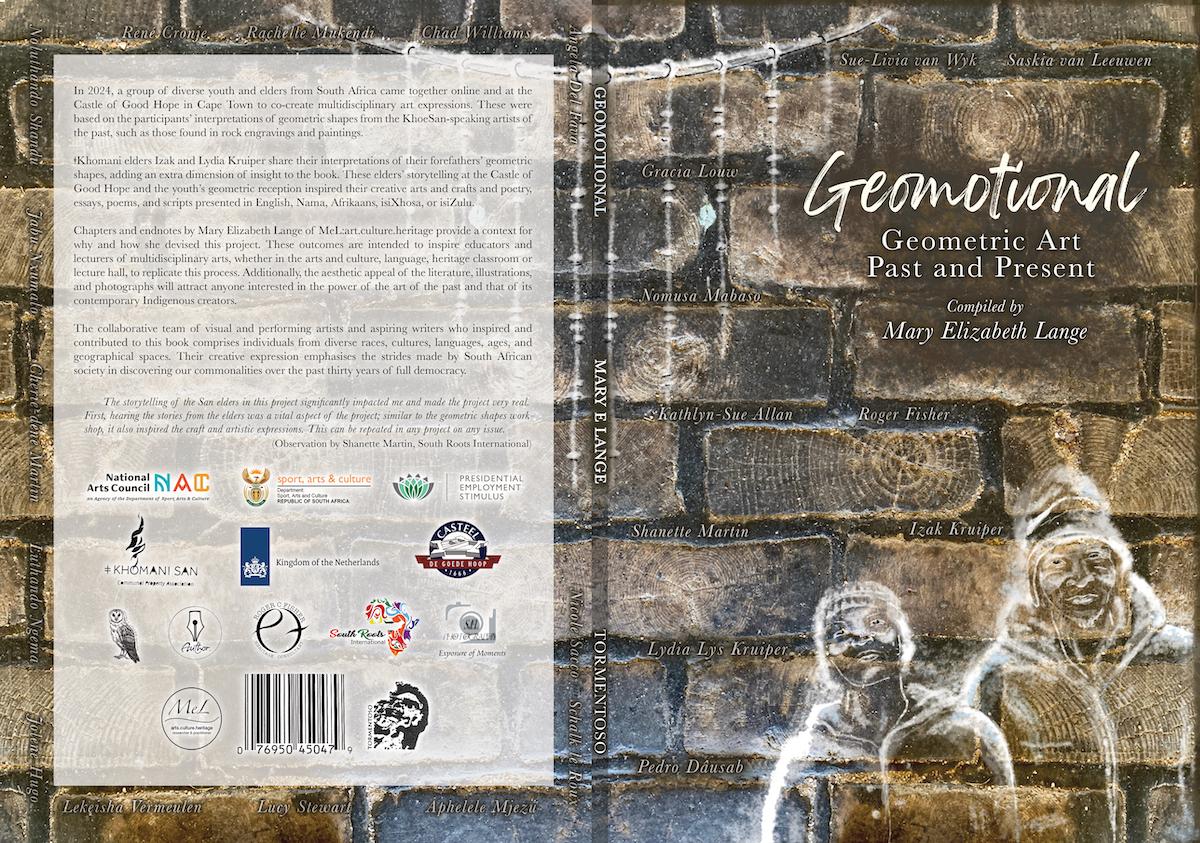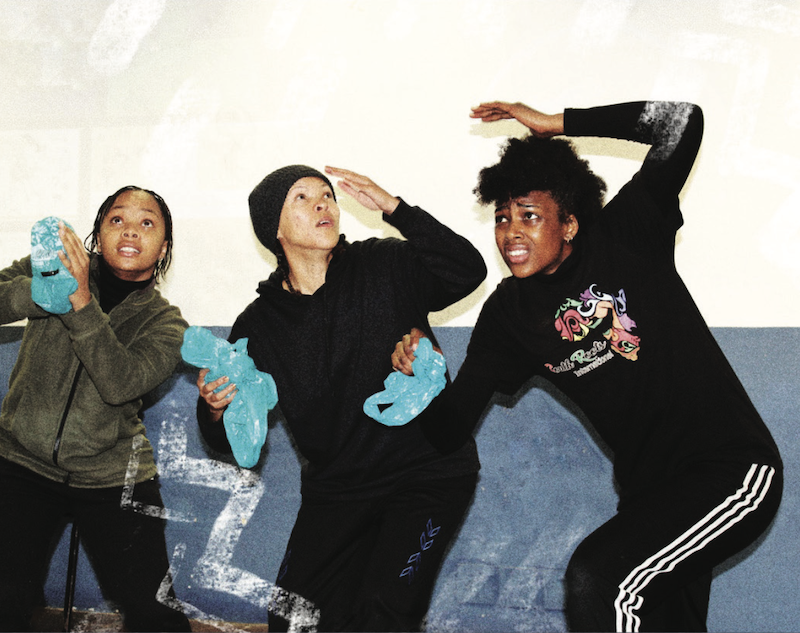
‘Geomotional’ is a remarkable and beautifully illustrated exploration of – as the sub-title says – ‘Geometric art, past and present’. The book, which has us journey through images, words, poetry and song, and gives account of a ‘performance-installation’, is compiled by Mary Elizabeth Lange, who is prolific in her writings on Indigenous art and story, and various intersections with heritage. Mary Lange routinely makes her co-workers also her co-authors, and this book is no exception with its ten contributors’ names appearing alongside hers on the front cover. They all figure in the pages within, blending through age, gender, language and geography, as they add insights and perspectives imaginatively brought together here.
The book is an outpouring from a project called Geomotional-Vorentoe, described as “a vibrant applied heritage and cultural project related to Khoe and San-speaking people’s history, identity and heritage”. "With funding from the Embassy of the Kingdom of the Netherlands South Africa, National Arts Council, SRI and MeL, the project, threading through Durban to the Kalahari to Cape Town, included July 2024 online workshops connecting city partners to those in remote rural places. This was followed by in-person sessions at the Castle of Good Hope in Cape Town, and production there, later in the same month, of a performance-installation. A Zoom workshop brought in other team members making brochures for the project and performance. This book is generated from the material and creative responses to geometric forms encountered by the participants.
Lydia Kruiper enthralls the youth at the Castle
Mary Lange starts from geometrics in rock art as metaphors of transformation and transition, and introduces the pervasive figure of the mythical ‘watersnake’ which she and others have taken up in scholarly work. She goes on to address landscape and spirituality, and the spirit of place, past and present. She details her own decades-long odyssey in a chapter, ‘Reading Geometric shapes’, in which she weaves together the academic rock art literature with her own experiences, with insights gained from people of the Southern Kalahari region, and with her personal immersion in rock art landscapes.
‘So sien ek hom – geometriese vorms van die verlede’ is a chapter written by ǂKhomani San elders Izak and Lydia Kruiper, who have engaged with rock art over many years and were co-writers of the book Biesje Poort – engraved landscape, many voices. This input forms part of a broader reception study which expands on the academic interpretation of geometric images, bringing different perspectives, in different languages (English Afrikaans, Nama, isiZulu). Insights from the Kruipers are given in Nama, transcribed and translated by Pedro Dâusab, who also writes in Afrikaans and English on ‘My mother tongue – Nama’.
The project’s creative responses flow on from here, making up the concluding chapters, and here are added further stories from the ǂKhomani-San elders, and other contributors. Dances were workshopped by Sue-Livia van Wyk and team, while the jeweler Kathlyn-Sue Allan, together with Izak and Lydia Kruiper, gave direction to arts-and-crafts elements. Integrated with the performances and the art, and interspersed throughout the book, are verses composed during the project by Gracia Louw, Nomusa Mabaso, Schalk le Roux and Roger Fisher. Shanette Martin’s essay, ‘Culture and Heritage for Transformation’ rounds off the project and the book.
Performer response to geometrics
The last word is from Roger Fisher who pays fitting tribute to Mary Lange’s achievement, citing her ways – her collaborative methodology – for drawing in the richness of participants’ experience, insights and creativity, making this so singular a book. All the contributors, and not least the artwork by Kathlyn-Sue Allan, have made for a lively celebration of the project, the people, the images, the places and the landscapes, caught up in this meshwork around geometric art, past and present.


